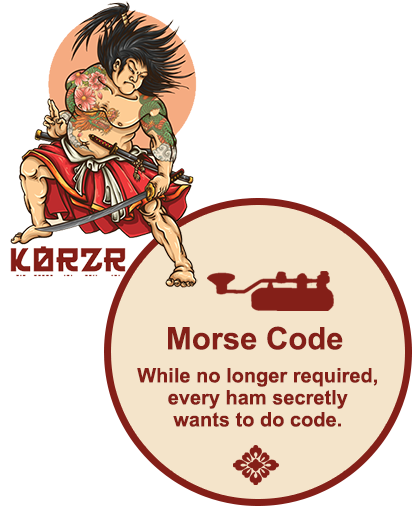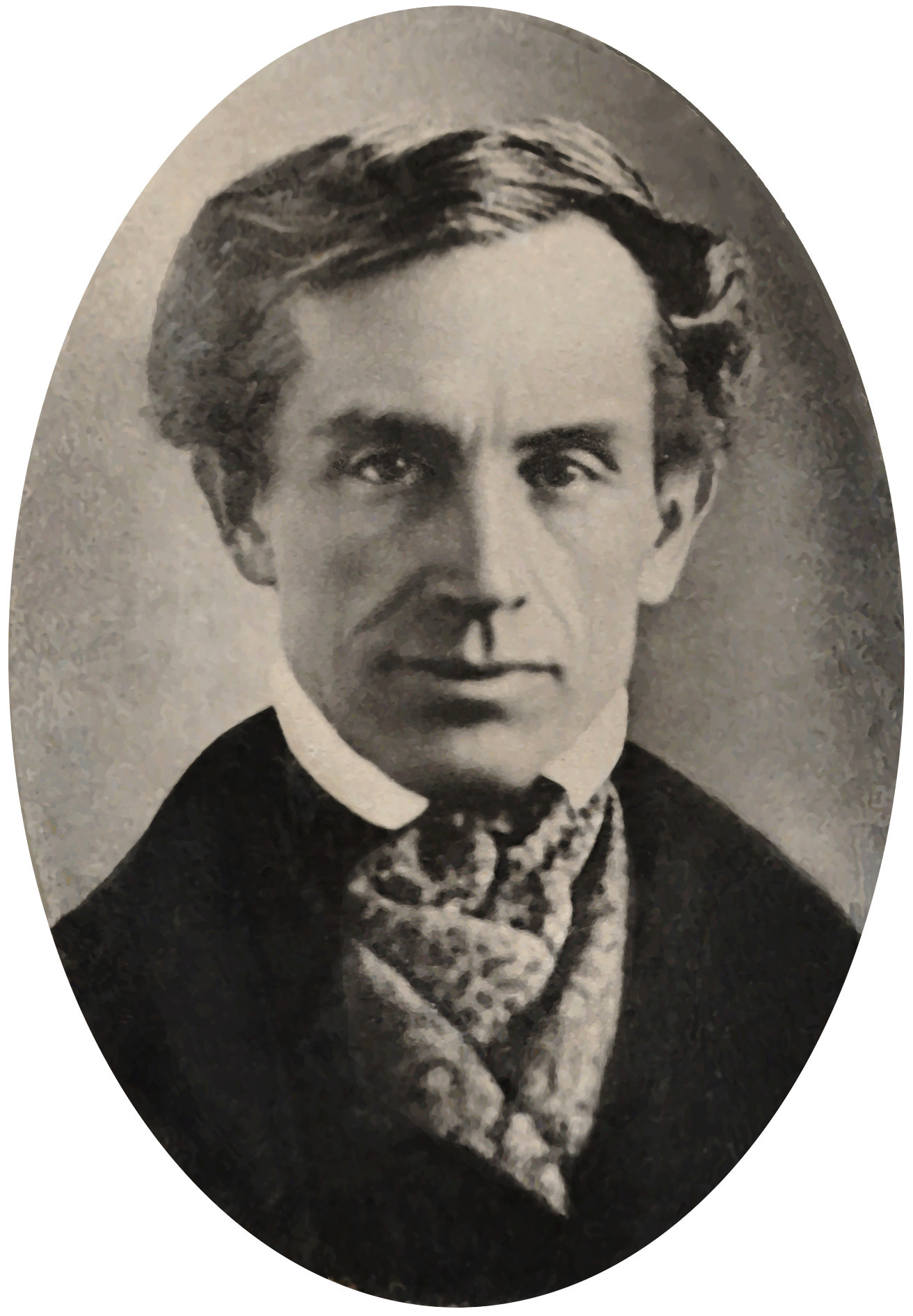Morse Code and CW

For generations of amateur radio operators, morse code was not only a requirement for licensing but also a primary means of communicating on the airwaves. Today, the requirement to know code to be licensed has been dropped. However, Morse Code is anything but dead and gone. Many hams are learning it because of its usefulness and frankly, this type of going ‘retro’ is a lot of fun as well.
I’ve curated the information on this page to serve two purposes. First, as an initial primer on the history of telegraphy and Morse Code. Second, as a listing of resources to help you start your own Morse Code/CW journey.
I hope you get excited about being part of what at one time was the core of we call today the telecommunications industry. Then, with that excitement, I hope you’ll join us in learning to send and receive code on the air.
Sections
- The Difference Between Morse Code and CW
- Morse Code and Amateur Radio
- Resources for Learning Morse Code
The Difference Between Morse Code and CW
Both the topic of Morse Code and CW or Continuous Wave require a bit of a primer on long distance communication of text messages. In case today’s teenagers believe text messages have only existed in their day, let us educate ourselves so as to able to help the younger generation comprehend the reality that people have always loved passing messages to one another.
From the Chinese along the Great Wall to African tribes, long distance transmission of messages has been going on for some time. However, what we today call telegraphy began with Claude Chappe in France in the late eighteenth century with a system of semaphores that allowed people to pass messages optically. Then in 1832 Russian diplomat Pavel Schilling developed one of the first electrical telegraphs.
In 1837 American painter Samuel Morse aided by several others including Joseph Henry and Alfred Vail developed what would become today’s Morse Code. Morse Code was used with the electrical telegraph in 1844. In 1865, after modification by German writer and journalist Friedrch Gerke, Morse Code would become the accepted international code for use in telegraphy.
Of interest to amateur radio operators, all of this messaging was being done through wires until 1896 when Guilelmo Marconi developed the first practical spark gap transmitter based on the earlier work of German physicist Heinrich Hertz.
These early transmitters had to be turned on and off to send the electrical pulses used to represent the Morse Code symbols. The waves generated by the spark gap transmitters were known as damped waves.
In 1920 the use of damped waves for telegraphy was replaced with continuous wave transmitters using vacuum tubes. With continuous wave or CW transmissions the transmitter is not shut off, rather the signal itself is interrupted. The sine wave produced and transmitted in short and long bursts and separated by brief periods of silence are what create the audible dits and dahs we know today as CW Morse Code.
Thus Morse Code is a coding system used to represent text components of messages like letters, numbers, and various symbols. Continuous Wave or CW is the mode or method of wireless signal transmission used to carry the Morse Code. It is, however, not uncommon to hear Morse Code and CW used interchangeably. Still it is helpful I think to know the difference.
Various Wikipedia articles were used in producing this curated summary. I recommend reading the following articles to learn more about the history of long-distance messaging, Morse Code, and various signaling modes like Continuous Wave or CW:
Morse Code and Amateur Radio
Until 1991, all amateur radio operators were required to be able to send and receive Morse Code at varying speeds. Gradually, this requirement was either reduced or eliminated until in 2007 Morse Code became completely optional for amateur radio operators. Today many hams choose to learn Morse Code for the challenge, for fun and for the practical advantages it offers.
With today’s technology, it is possible to learn Morse Code using free apps on a smart phone. Students can also learn from CDs or from human tutors. They can practice sending and receiving messages via the internet or of course with the proper radio equipment.
Resources for Learning Morse Code
General Links and Guides
On its website, the ARRL has linked to many good resources to help interested amateur radio operators begin to learn Morse Code. There is no need to reproduce this valuable resource here. Access the ARRL resources suing the following links:
iOS Apps for Learning Morse Code
I have personally found the following iOS apps to helpful in my study of Morse Code:
Simple trainer app that teaches you to copy the morse code alphabet starting with the letters K and M. As you feel confident with the letters learned you can move on an add an additional letter making the next set a three letter set, then four letters and so on. Sends in five-letter groupings of random characters. I would rather have words than random groupings. This is however a decent little app for basic code practice. My rating: 3.5 out of 5 stars.
Great little app for learning to send morse code. This app helps you learn code through simple gameplay. As letters and numbers and even punctuation drops from the top of your screen you have until that character gets to the bottom before you ‘lose.’ To clear the character simply tap out its code in a space at the bottom of the screen. As you learn you can increase difficulty. It includes Q codes, common CW phrases, numbers and more in the paid version. Fun way to learn the basics. My rating: 4 out of 5 stars.
This is by far my favorite Morse Code app on the app store. You can learn the code practice copying, and much more. A $5 upgrade unlocks serious learning help including access to Koch method training and CW Academy lessons. If I could only get one, this would be it. My rating: 5 out of 5 stars.
There are many more. Some are free and some cost a bit. Go ahead and download the free ones and try them. I was a little pickier with the ones that cost more than $0.99. But there quite a few to choose from. If you have a favorite morse code app, please send me the name of the app and your brief review and I will consider add ing it to this resource for others to use.
Android Apps for Learning Morse Code
Being an Apple Fanboy means that I do not have personal experience with Android-only apps. Some of the following apps are available on both platforms. If this is the case, I assume the user experience is similar. Please refer to my notes above for more on these apps. Other apps may be Android Only. I have tried to list other sources of opinion on these apps. (I welcome any other reviews or apps or recommendations.)
- Morse Trainer – Recommended by Rick Barnich (K8BMA)
- Koch Morse Trainer – Recommended by Rick Barnich (K8BMA)
- And many more available on the Google Play Store
Practice Morse Code on the Internet
Beyond the resources listed on the ARRL pages, you might also want to check out CWcom (Morse Power) and Internet CW. Using these resources you can send and receive morse code via the internet (no license required). I wish I could say these sites were easy to use and that the set up they ask for is simple and clear, but I can’t. Still, good resources here and worth checking out.
